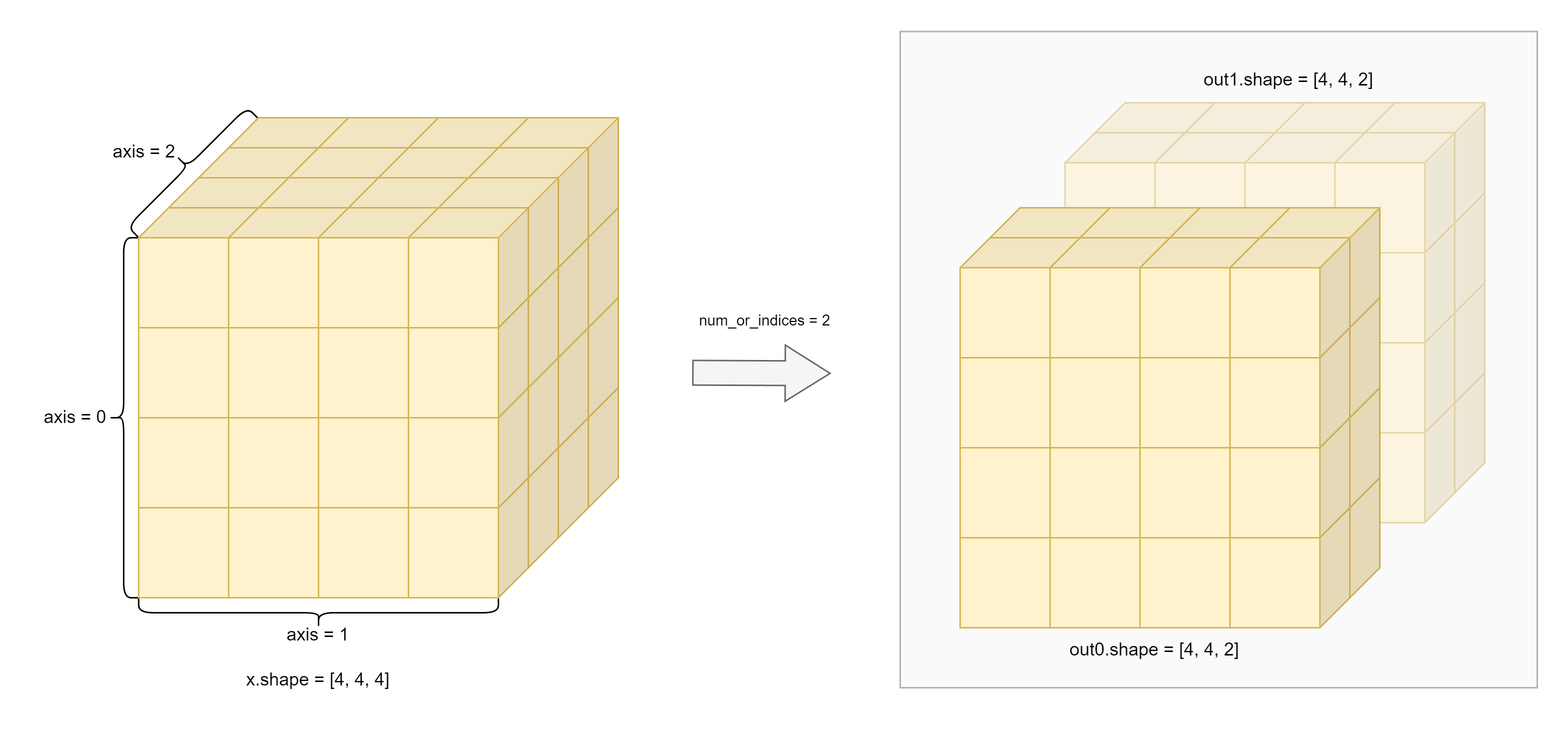dsplit
- paddle. dsplit ( x: Tensor, num_or_indices: int | Sequence[int], name: str | None = None ) list[Tensor] [source]
-
dsplitFull name Depth Split, splits the input Tensor into multiple sub-Tensors along the depth axis, which is equivalent topaddle.tensor_splitwithaxis=2.Note
Make sure that the number of Tensor dimensions transformed using
paddle.dsplitmust be no less than 3.In the following figure, Tenser
xhas shape [4, 4, 4], and afterpaddle.dsplit(x, num_or_indices=2)transformation, we getout0andout1sub-Tensors whose shapes are both [4, 4, 2] :
- Parameters
-
x (Tensor) – A Tensor whose dimension must be greater than 2. The data type is bool, bfloat16, float16, float32, float64, uint8, int32 or int64.
num_or_indices (int|list|tuple) – If
num_or_indicesis an intn,xis split intonsections. Ifnum_or_indicesis a list or tuple of integer indices,xis split at each of the indices.name (str|None, optional) – The default value is None. Normally there is no need for user to set this property. For more information, please refer to Name .
- Returns
-
list[Tensor], The list of segmented Tensors.
Examples
>>> import paddle >>> # x is a Tensor of shape [7, 6, 8] >>> x = paddle.rand([7, 6, 8]) >>> out0, out1 = paddle.dsplit(x, num_or_indices=2) >>> print(out0.shape) [7, 6, 4] >>> print(out1.shape) [7, 6, 4] >>> out0, out1, out2 = paddle.dsplit(x, num_or_indices=[1, 4]) >>> print(out0.shape) [7, 6, 1] >>> print(out1.shape) [7, 6, 3] >>> print(out2.shape) [7, 6, 4]

